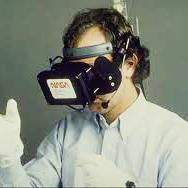Conventional planar video streaming is the most popular application in mobile systems and the rapid growth of 360 video content and virtual reality (VR) devices are accelerating the adoption of VR video streaming. Unfortunately, video streaming consumes significant system energy due to the high power consumption of the system components (e.g., DRAM, display interfaces, and display panel) involved in this process. We propose BurstLink, a novel system-level technique that improves the energy efficiency of planar and VR video streaming. BurstLink is based on two key ideas. First, BurstLink directly transfers a decoded video frame from the host system to the display panel, bypassing the host DRAM. To this end, we extend the display panel with a double remote frame buffer (DRFB), instead of the DRAM's double frame buffer, so that the system can directly update the DRFB with a new frame while updating the panel's pixels with the current frame stored in the DRFB. Second, BurstLink transfers a complete decoded frame to the display panel in a single burst, using the maximum bandwidth of modern display interfaces. Unlike conventional systems where the frame transfer rate is limited by the pixel-update throughput of the display panel, BurstLink can always take full advantage of the high bandwidth of modern display interfaces by decoupling the frame transfer from the pixel update as enabled by the DRFB. This direct and burst frame transfer of BurstLink significantly reduces energy consumption in video display by reducing access to the host DRAM and increasing the system's residency at idle power states. We evaluate BurstLink using an analytical power model that we rigorously validate on a real modern mobile system. Our evaluation shows that BurstLink reduces system energy consumption for 4K planar and VR video streaming by 41% and 33%, respectively.
翻译:常规平流视频流是移动系统中最受欢迎的应用,360个视频内容和虚拟现实(VR)装置的快速增长正在加速采用 VR 视频流。 不幸的是,视频流消耗了大量系统能量,因为在此过程中所涉及的系统组件(如DRAM、显示界面和显示面板)的电耗很高。 我们提议了BurstLink, 这是一种创新的系统级技术, 提高平流和VR 视频流流的能效。 BurstLink基于两个关键理念。 首先, BurstLink 直接将一个解码视频框架从主机系统转到显示板, 绕过主机 DRAM 。 至此, 我们延长了显示面板, 而不是 DRAM 的双框缓冲。 这样, 系统可以直接更新 DRFBB, 同时用储存在 DRFB B 4 的当前框架更新。 其次, BurstLink 将一个完整的解码框架传输到显示显示显示显示面板的系统, 使用最高级显示的显示器显示器显示器显示器显示器显示器显示器显示器显示器显示器显示器显示器显示器显示器显示器的最大节流的系统, 。




